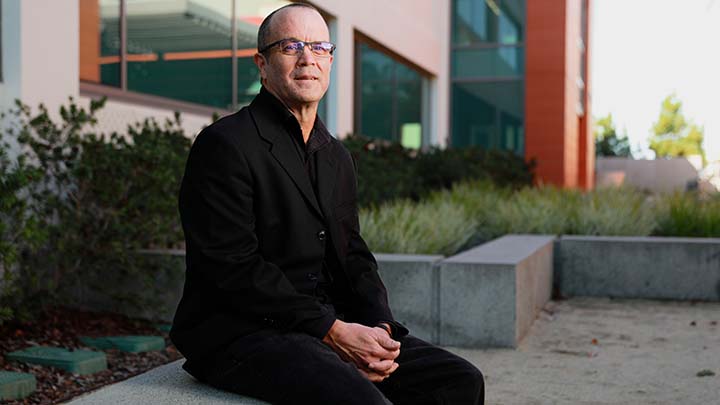San Diego State University Geographer Elected Fellow of the American Association for the Advancement of Science
Sergio Rey, a San Diego State University geography professor whose innovative geospatial data science software has garnered more than two million downloads worldwide, has been elected a fellow of the American Association for the Advancement of Science.
Rey is among 502 scientists, engineers, and others named to the 2023 class of fellows, a lifetime honor. Announced Thursday, the class coincides with the 150th anniversary of the AAAS fellows program, which counts SDSU alumna and retired astronaut Ellen Ochoa, SDSU College of Sciences Dean Jeff Roberts, Endowed Campanile Foundation Professor of Geography Janet Franklin, and Distinguished Professor of Speech, Language and Hearing Sciences Karen Emmorey and other emeritus faculty as previously elected fellows.
In its announcement, the AAAS said Rey was being honored for distinguished contributions to the fields of geographical information science and regional science.
The honor “shows that we have a good culture on campus in terms of supporting advanced spatial science and other disciplines,” Rey said, “as well as a strong integration with the SDSU teaching mission. It sends a signal that it is valued broadly.”
“We are very proud of Sergio and his leadership revolutionizing the research tools that are available to scholars and industry professionals. His dedication to increasing access to scientific exploration is a wonderful example of SDSU’s commitment to equity and boundary-crossing collaboration,” said Hala Madanat, SDSU’s vice president for research and innovation.
Rey is among the chief architects of the The Python Spatial Analysis Library (PySAL,) an open-source software project that has become a cornerstone of spatial data science. It has been adopted by researchers around the globe. As open-source software, it allows users to use and modify the code as they see fit, often resulting in the formation of a community of users and developers.
“PySAL was born at San Diego State University and I felt really fortunate because at the time it wasn’t clear if open source was going to be a thing or not,” Rey said.
Rey said his colleagues at SDSU supported the project at a time when peers at other institutions were interested but declined to become involved. SDSU researchers “thought it was a risk, but one worth taking, and I think if I had been somewhere else it probably wouldn’t have happened,” Rey said.
PySAL programmers wrote their own code, and then people asked for that code. Rey said, in essence, it was an indication of how sharing code wasn’t common at that point, but it was an introduction to the early days of open science and open source where creating reproducible research, tapping into network effects, and sharing innovations enhanced the pace of scientific discovery.
“I became a little bit of an evangelist because I saw the impact it had on my own career and the teams I was interacting with and I became committed to that cause,” Rey said.
Today, the fields using PySAL include geography, chemistry, bioinformatics, environmental science, economics, religion, sociology, and even theater. Users include Google, Reddit, Instagram, NASA, Netflix, Spotify, and Pixar.
“It has had an impact way beyond what we imagined,” said Rey. Compared to any paper or book he might write, the impact of this work stands out as a major achievement.
PySAL is also a powerful tool for teaching and research at SDSU. It offers a platform for teaching seminars and giving students an introduction to reproducible science. Many SDSU students who have worked on the project in the past have become professors, while some have entered careers in private or public sectors.
Rey attributes his success to the culture at SDSU — the supportive and encouraging nature of world-class scholars and colleagues not only in the Department of Geography but also across campus. He said he is immensely proud of the PySAL team and profoundly grateful for the opportunity to collaborate with such a dedicated and innovative group. Their hard work, creativity, and commitment to open science have been instrumental in PySAL’s success and in pushing the boundaries of spatial analysis, he said.
Rey taught at SDSU from 1994 to 2008 and is a former geography department chair; he was rehired in 2022 from the University of California, Riverside. His research and work align with SDSU’s long-term aspirational goals of becoming an R1 classification of the Carnegie Classification of Institutions of Higher Education. Under changes scheduled to be introduced in 2025, an R1 classification will denote “Doctoral University: Very High Research Spending and Doctorate Production.” SDSU currently has an R2 Carnegie Classification, for “high research activity,” a category which next year will be reframed as “Doctoral University: High Research Spending and Doctorate Production.”

